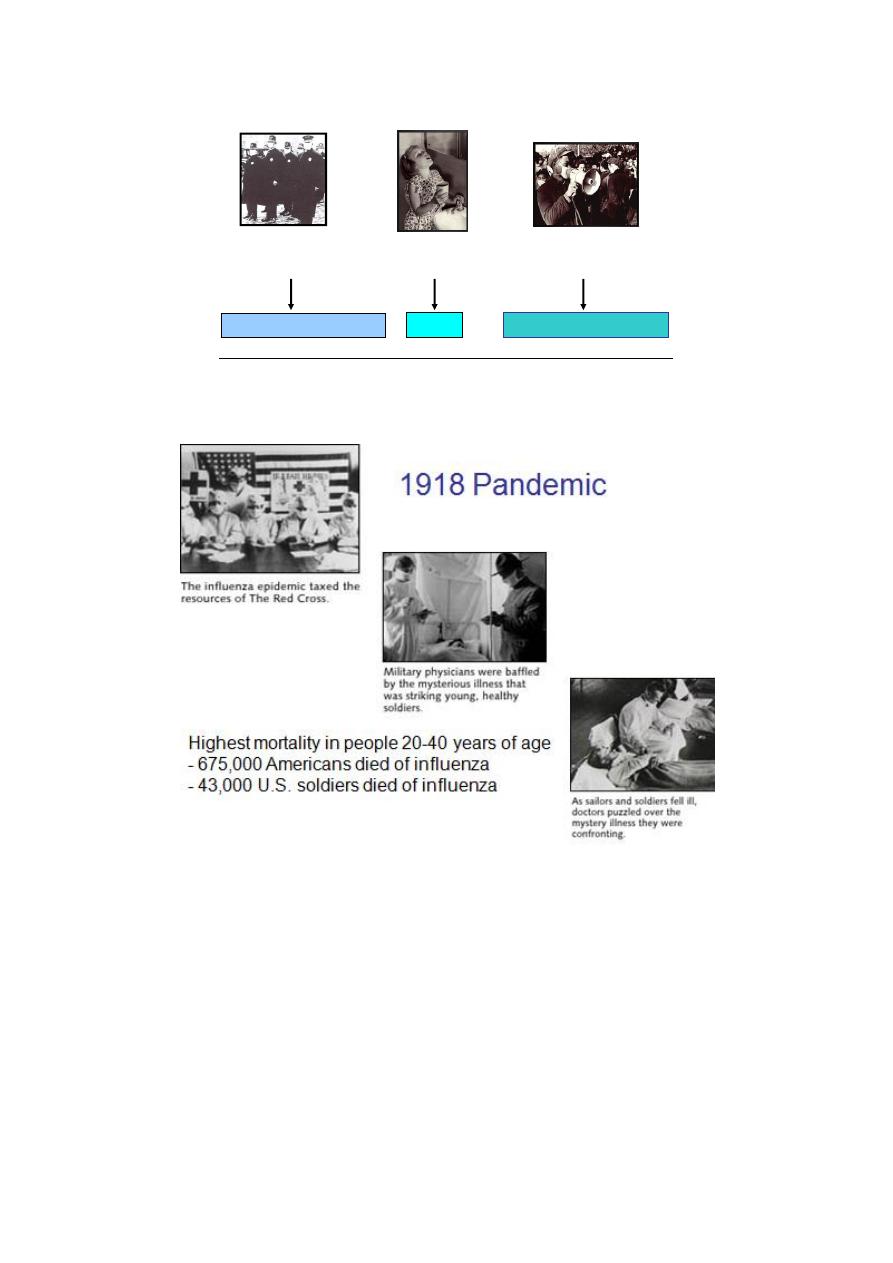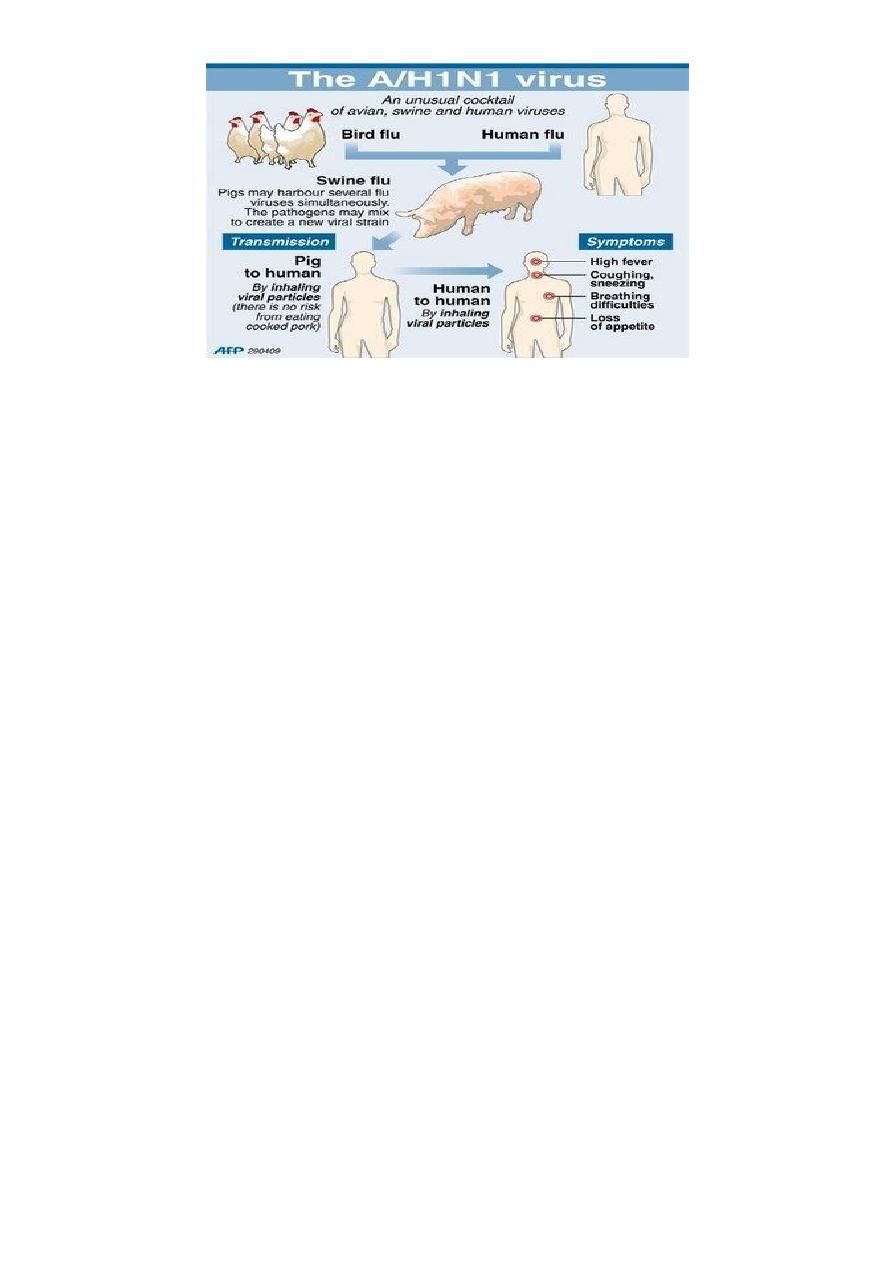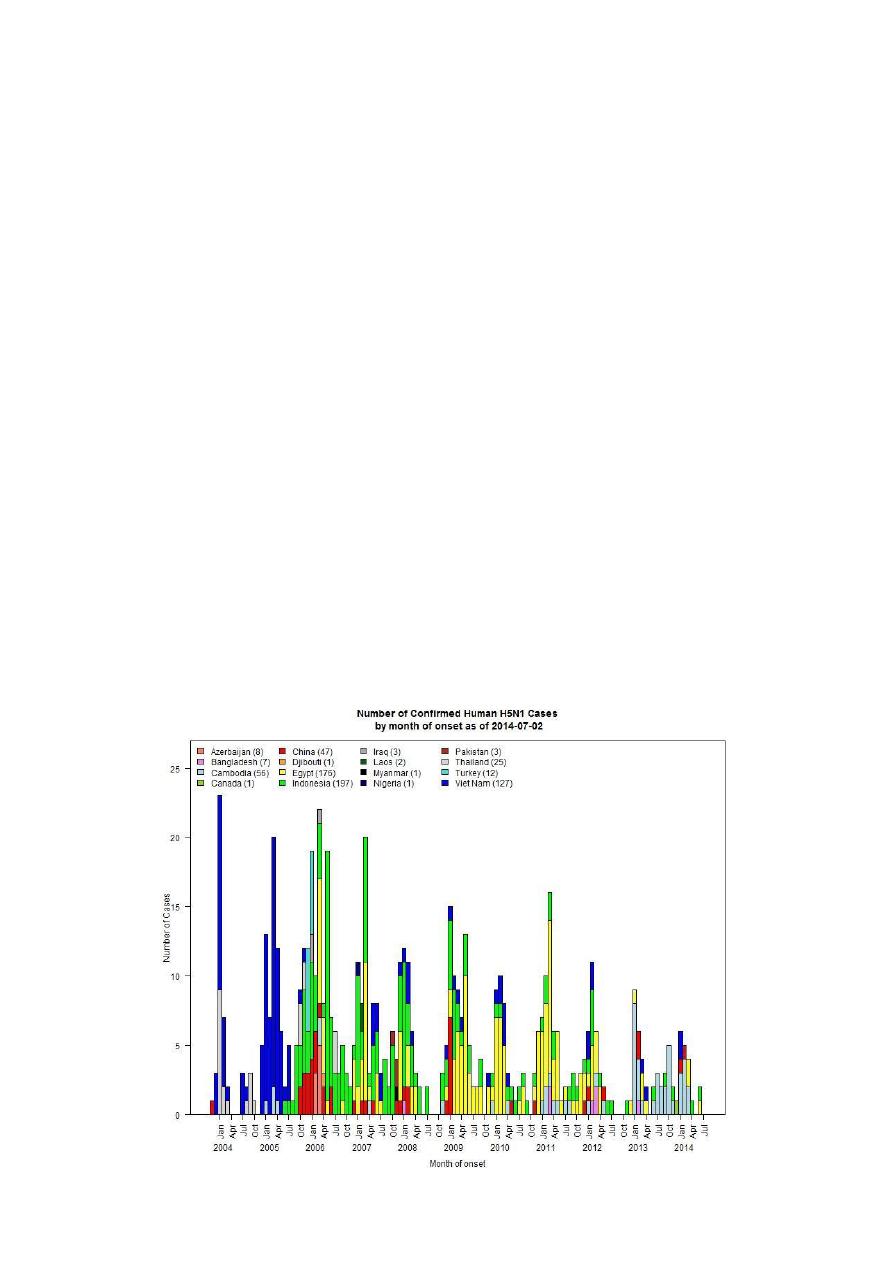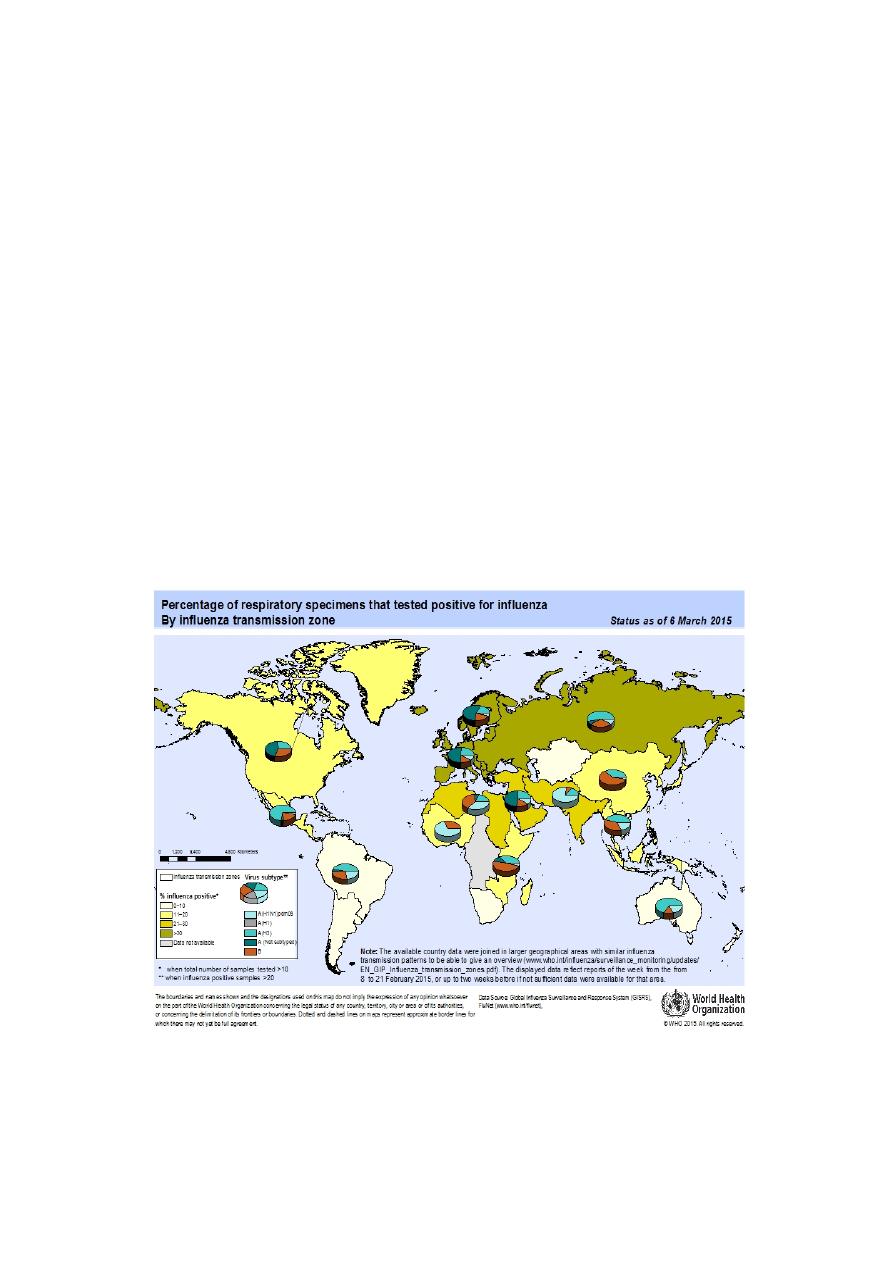
Community Dr. Zahraa
Epidemiology of Avian and Pandemic
Influenza
What is influenza?
An acute respiratory illness resulting from infection with an influenza virus.
Highly infectious and can spread rapidly from person to person.
Some strains cause more severe illness than others.
What is an influenza pandemic?
Influenza pandemics are worldwide epidemics of a newly emerged strain of influenza.
Few, if any, people have any immunity to the new virus .
This allows the new virus to spread widely, easily, and to cause more serious illness.
What causes a pandemic?
Pandemics occur when a new avian influenza strain acquires the ability infect people
and to spread easily person to person.
This can occur in two ways:
A. Reassortment (an exchange of seasonal and avian influenza genes in a person or
pig infected with both strains).
B. Mutation (an avian strain becomes more transmissible through adaptive mutation
of the virus during human avian influenza infection).
History of influenza:
412 BC - first mentioned by Hippocrates
1580 - first pandemic described
1580-1900 - 28 pandemics

Pandemic influenza in the
20
th
Century
1920
1940
1960
1980
2000
H1N1
H2N2
H3N2
1918
“Spanish Flu” 1957 “Asian Flu” 1968 “Hong Kong Flu”
20-40 million deaths
1 million deaths
1 million deaths
Novel H1N1 (referred to a swine flu early on) is a new influenza virus that is spreading
from person-to-person.
The United States government has declared a public health emergency in the U.S. in
response to the H1N1 outbreak.
The first cases of human infection with novel H1N1 influenza virus were detected in
April 2009 in San Diego, California and Texas.
The virus is widespread in the United States at this time and has been detected
internationally as well.

CDC follows an internationally accepted naming convention for influenza viruses. This
convention was accepted by WHO in 1979 and published in February 1980. The
approach uses the following components:
o The antigenic type ( A, B, C)
o The host of origin ( swine, equine, chicken).
o Geographical origin ( Denver, Taiwan, etc.)
o Strain number ( 15, 7, etc.)
o Year of isolation ( 57, 2009, etc.)
o For influenza A viruses, the hemagglutinin and neuraminidase antigen (H1N1), (H5N1)
o For example:
A/duck/Alberta/35/76 (H1N1) for a virus from duck origin
A/Perth/16/2009 (H3N2) for a virus from human origin
H5N1 Avian Viral Strain
One of the most deadly strains to infect humans.
Human cases have resulted from contact with infected poultry or surfaces
contaminated with secretions/excretions from infected birds.
Little or no immunity to H5N1.
The A(H5N1) subtype virus is endemic in poultry in at least six countries
1. Bangladesh
2. China
3. Egypt
4. India
5. Indonesia
6. Vietnam
Poultry outbreaks occur frequently in these and nearby countries.

First cases in Hong Kong in 1997.
Reemerged in Asia in 2003.
Number of infections peaked in 2006.
Sporadic cases with high mortality continue.
Between 2003 and Sept 2014
o 667 cases in 16 countries.
o Includes 1 fatal case with avian influenza A(H5N6) infection
o 393 (59%) deaths.
Most cases occur from close contact with infected live or dead birds, or H5N1 virus-
contaminated environments.
Human-to-human transmission is rare. ???
In 2005, in Indonesia, limited person-to-person H5N1 transmission could not be
excluded in two clusters among patients who had no known contact with poultry or
other animals.
On 8 January 2014, Canada reported a fatal imported case of influenza A(H5N1)
infection. This is the first confirmed human case of H5N1 in North America
There is sudden increase in the number of H5N1 human infections in Egypt that
began in November 2014 and continued during January and February 2015 (108
human cases and 35 deaths).
The number of cases over this period is larger than yearly totals reported by any
country since human H5N1 virus infections re-emerged in late 2003.

Confirmed Cases of H5N1
(currently the most obvious threat to health)
From end-2003 through January 2015, 777 laboratory-confirmed human cases of H5N1
virus infection have been reported to WHO from 16 countries, of these cases, 428
(55.1%) have been fatal.
Current situation 2015:
The current global influenza situation is characterized by a number of trends that
must be closely monitored.
Increase in the variety of animal influenza viruses co-circulating and exchanging
genetic material, giving rise to novel strains.
Continuing cases of human H7N9 infections in China.
Recent spurt of human H5N1 cases in Egypt.
Changes in the H3N2 seasonal influenza viruses, which have affected the protection
conferred by the current vaccine, are also of particular concern.
